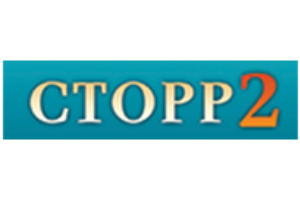Description
The Comprehensive Test of Phonological Processing Second Edition (CTOPP-2) helps evaluate phonological processing abilities as a prerequisite to reading fluency.

The Comprehensive Test of Phonological Processing Second Edition (CTOPP-2) helps evaluate phonological processing abilities as a prerequisite to reading fluency.
The Comprehensive Test of Phonological Processing Second Edition (CTOPP-2) helps evaluate phonological processing abilities as a prerequisite to reading fluency.
Richard Wagner, Joseph Torgesen, Carol Rashotte, Nils A. Pearson
Age Range:4:0–24:11
Scoring Option:Manual scoring
RTI Tiers:RTI Levels 2 and 3
Completion Time:40 minutes
Scores/Interpretation:Subtest scaled scores, percentile ranks, age and grade equivalents, composite indexes, and developmental scores
Publication Date:2013
The CTOPP-2 can be used to help evaluate phonological processing abilities as a prerequisite to reading fluency. The revised version of this popular assessment is now appropriate for use with children as young as 4 years old. The assessment features all new normative data and a new phonological awareness subtest, Phoneme Isolation.
Use CTOPP-2 to help:
Levels:
Subtests:
Supplemental tests: Use the supplemental tests to assess specific phonological strengths and weaknesses.
Phonological Awareness Component Scores (PACS) represents awareness of and access to the phonological structure of oral language.
Phonological Memory Component Scores (PMCS) helps to measure the ability to code information phonologically for temporary storage in working or short-term memory.
The Rapid Symbolic Naming Composite Score (RSNCS) measures the ability to include efficient retrieval of phonological information from long-term or permanent memory and execute a sequence of operations quickly and repeatedly.
Rapid Non-Symbolic Naming Composite Score (RNNCS) measures the ability to include efficient retrieval of phonological information from long-term or permanent memory and execute a sequence of operations quickly and repeatedly using objects and colors.
The Alternate Phonological Awareness Composite Score (APACS), an alternate composite for measuring phonological awareness, is available for 7 through 24 year olds. The APACS measures phonological awareness exclusively with nonwords, memory, as well as the ability to execute a sequence of operations quickly and repeatedly